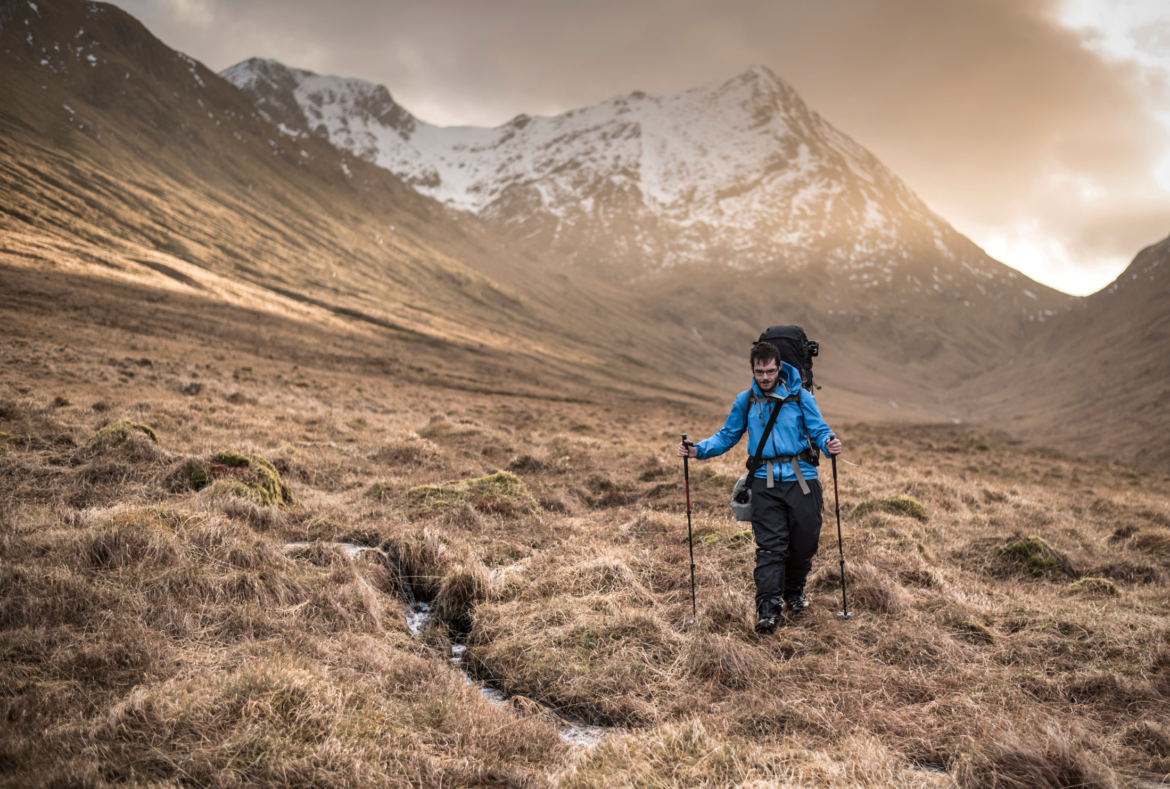The Cape Wrath Trail is widely regarded as one of the most difficult long-distance hikes in the UK, and its difficulty comes from several factors combined. Here’s a detailed breakdown of why it’s so challenging:
1. Navigation Challenges
- No waymarking or signs: The trail is not officially marked or maintained like other long-distance routes (e.g., West Highland Way). You must rely on maps (Ordnance Survey maps), compass skills, and GPS devices.
- Complex terrain: The path often involves cross-country walking over rough, unmarked terrain such as moorland, bogs, and rocky ground.
- Poor visibility: Scottish weather can change quickly, with fog and rain often reducing visibility and making navigation even harder.
Impact: If you don’t have good map-reading and navigation skills, you can easily get lost or spend much longer finding the way.
2. Physical Demands
- Distance: The route is around 200 miles (320 km), often completed in 10–20 days, depending on pace.
- Elevation: The trail crosses multiple mountain passes and includes several Munros (peaks over 3,000 feet). You’ll face steep climbs and descents.
- Terrain: The trail includes boggy ground, rocky paths, river crossings, and sometimes loose scree and boulder fields.
- Heavy pack: Because of the remoteness and lack of facilities, you’ll likely carry several days of food and camping gear, adding to the strain.
Impact: The combination of distance, elevation, and terrain requires strong endurance and fitness.
3. Weather Conditions
- Unpredictability: Weather in the Highlands can be highly variable — you can face sunshine, heavy rain, strong winds, and even snow in shoulder seasons.
- Cold and wet: Exposure to cold and wet conditions increases the risk of hypothermia, especially if you’re wet and fatigued.
- Midges: In summer, especially June to August, midges (tiny biting insects) can be a serious nuisance in sheltered and low-lying areas.
Impact: The weather can greatly affect your physical and mental stamina, and you must be prepared for all conditions.
4. River Crossings
- Many rivers and streams along the route have no bridges.
- After rain, river crossings can become dangerous or impossible.
- You may need to detour long distances or wait for conditions to improve.
Impact: This adds uncertainty and requires good judgement and sometimes improvisation.
5. Remoteness and Isolation
- Large sections of the trail have no phone signal, no shops, and no accommodation.
- You must be self-sufficient, carrying food, water treatment supplies, and emergency gear.
- Emergency services may take hours to reach you if needed.
Impact: Mental toughness and preparedness are essential.
6. Wild Camping and Accommodation
- Most of the trail requires wild camping or staying in basic bothies (simple shelters).
- You should be comfortable camping in wild conditions, setting up camp quickly, and leaving no trace.
Impact: This requires experience and resilience, especially in bad weather.
Summary of Difficulty Level
| Factor | Difficulty Level | Notes |
|---|---|---|
| Navigation | High | Requires advanced map and compass skills |
| Physical Endurance | High | Long distances, tough terrain, heavy pack |
| Weather | Variable, often challenging | Rain, wind, cold, and midges |
| River Crossings | Potentially hazardous | Can require detours or waiting |
| Isolation | High | Limited access to help or supplies |
| Accommodation | Basic to none | Mostly wild camping and bothies |
Who Should Attempt the Cape Wrath Trail?
- Experienced hikers with strong navigation and outdoor skills.
- People who are physically fit and prepared for long days of strenuous walking.
- Those who are mentally resilient and comfortable being alone or isolated.
- Walkers who are well-equipped and able to self-sustain for several days at a time.
How Does It Compare to Other UK Trails?
- Much harder than the West Highland Way or the Great Glen Way, which are well-marked and have frequent accommodation.
- Comparable in difficulty to other tough, wilderness routes such as the Scottish Highlands Traverse or Pennine Way, but arguably even more remote.
- Often compared to serious wilderness trails worldwide due to its ruggedness and lack of infrastructure.
Tips to Manage the Difficulty
- Practice navigation skills before attempting the trail.
- Build up your fitness level with hill walking and carrying a loaded pack.
- Choose your timing carefully, avoiding midges and the worst weather seasons.
- Plan your route and resupply points in advance.
- Consider going with a partner or group for safety and shared skills.
- Carry emergency communication devices like a satellite messenger if possible.
Final Verdict
The Cape Wrath Trail is extremely challenging — physically, mentally, and logistically. But for those who relish adventure, solitude, and wilderness, its rewards are immense. The raw beauty of the Highlands, the thrill of self-reliance, and the sense of achievement make it one of the ultimate hiking experiences in the UK.

